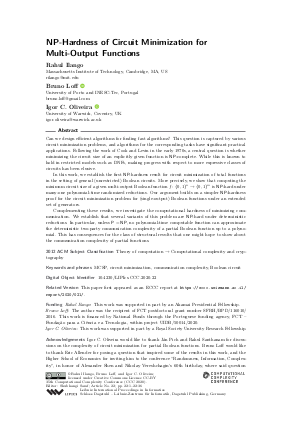LIPIcs.CCC.2020.22.pdf
- Filesize: 0.69 MB
- 36 pages

 Creative Commons Attribution 3.0 Unported license
Creative Commons Attribution 3.0 Unported license











































































Feedback for Dagstuhl Publishing